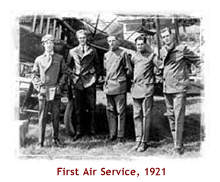Isolation 1929
In 1929 Western Australia was a small isolated community and Perth,
its capital, was the most isolated city in the world. This sense of physical
and psychological isolation was part of the Western Australian identity.
While the pro-Federation campaigners of the nineteenth century had proclaimed
"A Nation for a Continent and a Continent for a Nation", Western
Australians were separated from the rest of Australia by the continent
they shared. Interstate travel
was costly and inconvenient. |
Please note: The content on this website is made available for archival purposes and may not meet the State Library of Western Australia's current standards for web accessibility, mobile device compatibility, historical accuracy and cultural sensitivity.